Carl S Marshall
TextureDreamer: Image-guided Texture Synthesis through Geometry-aware Diffusion
Jan 17, 2024
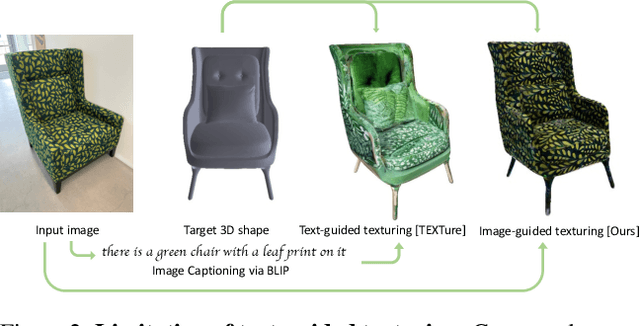

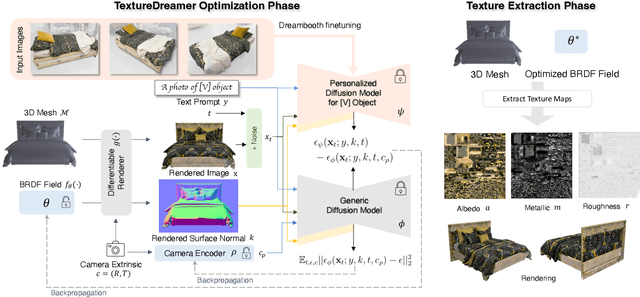
Abstract:We present TextureDreamer, a novel image-guided texture synthesis method to transfer relightable textures from a small number of input images (3 to 5) to target 3D shapes across arbitrary categories. Texture creation is a pivotal challenge in vision and graphics. Industrial companies hire experienced artists to manually craft textures for 3D assets. Classical methods require densely sampled views and accurately aligned geometry, while learning-based methods are confined to category-specific shapes within the dataset. In contrast, TextureDreamer can transfer highly detailed, intricate textures from real-world environments to arbitrary objects with only a few casually captured images, potentially significantly democratizing texture creation. Our core idea, personalized geometry-aware score distillation (PGSD), draws inspiration from recent advancements in diffuse models, including personalized modeling for texture information extraction, variational score distillation for detailed appearance synthesis, and explicit geometry guidance with ControlNet. Our integration and several essential modifications substantially improve the texture quality. Experiments on real images spanning different categories show that TextureDreamer can successfully transfer highly realistic, semantic meaningful texture to arbitrary objects, surpassing the visual quality of previous state-of-the-art.
Fast Monte Carlo Rendering via Multi-Resolution Sampling
Jun 24, 2021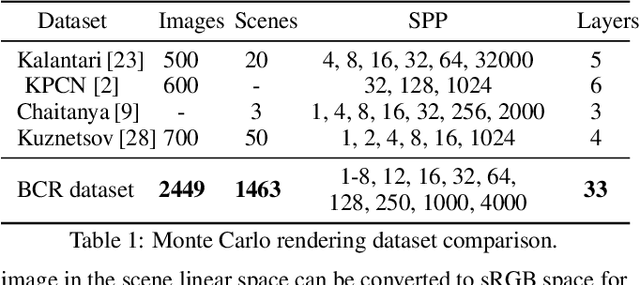

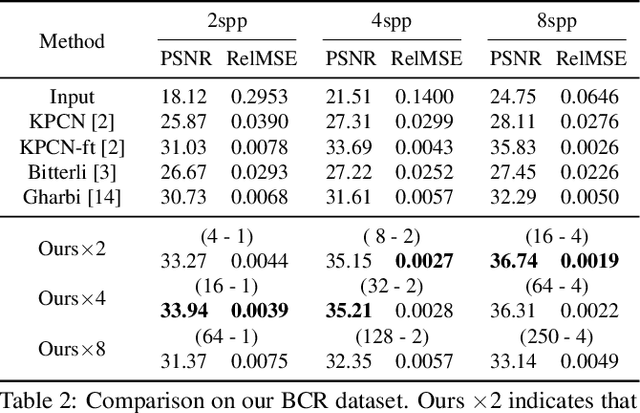
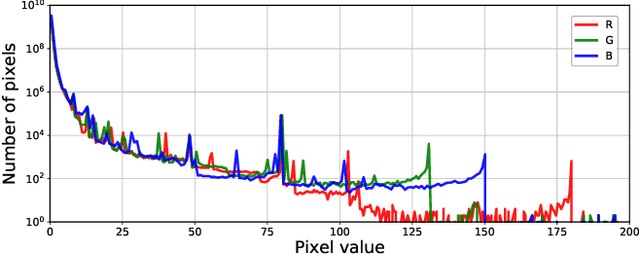
Abstract:Monte Carlo rendering algorithms are widely used to produce photorealistic computer graphics images. However, these algorithms need to sample a substantial amount of rays per pixel to enable proper global illumination and thus require an immense amount of computation. In this paper, we present a hybrid rendering method to speed up Monte Carlo rendering algorithms. Our method first generates two versions of a rendering: one at a low resolution with a high sample rate (LRHS) and the other at a high resolution with a low sample rate (HRLS). We then develop a deep convolutional neural network to fuse these two renderings into a high-quality image as if it were rendered at a high resolution with a high sample rate. Specifically, we formulate this fusion task as a super resolution problem that generates a high resolution rendering from a low resolution input (LRHS), assisted with the HRLS rendering. The HRLS rendering provides critical high frequency details which are difficult to recover from the LRHS for any super resolution methods. Our experiments show that our hybrid rendering algorithm is significantly faster than the state-of-the-art Monte Carlo denoising methods while rendering high-quality images when tested on both our own BCR dataset and the Gharbi dataset. \url{https://github.com/hqqxyy/msspl}
 Add to Chrome
Add to Chrome Add to Firefox
Add to Firefox Add to Edge
Add to Edge